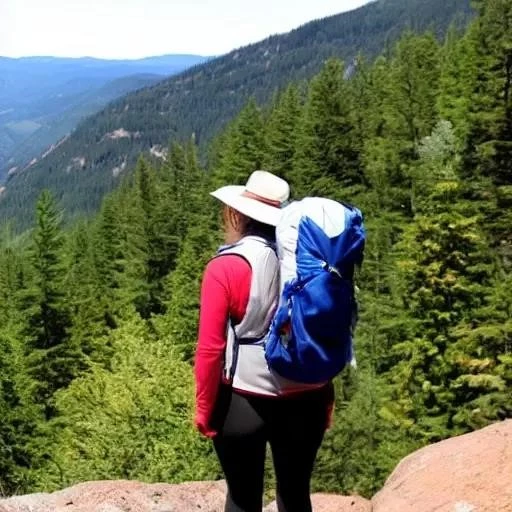
Embarking on a hiking adventure‚ whether a tranquil day trek or an ambitious multi-day expedition‚ promises unparalleled connection with nature and profound personal discovery. Yet‚ even the most breathtaking vistas can be marred by a nagging discomfort‚ a persistent ache‚ or the sheer frustration of an ill-fitting or undersized pack. The backpack‚ far from being a mere container‚ emerges as the single most critical piece of equipment shaping your entire outdoor experience. It’s the silent partner‚ the tireless porter‚ meticulously carrying your essentials while safeguarding your comfort and endurance across varied terrains. Neglecting its importance is akin to a chef overlooking the quality of their primary knife – a fundamental oversight with far-reaching consequences.
In a world increasingly prioritizing personalized experiences‚ the generic approach to gear selection is rapidly becoming obsolete. Gone are the days of grabbing the nearest available bag; today’s discerning hiker understands that an optimally sized and expertly fitted Backpack for Hiking isn’t just a luxury‚ but a strategic imperative. By integrating insights from seasoned trail veterans and cutting-edge ergonomic design‚ we can unlock a new realm of hiking pleasure‚ transforming arduous climbs into exhilarating triumphs and long distances into rewarding journeys. This isn’t merely about storage; it’s about optimizing performance‚ preventing injury‚ and ultimately‚ deepening your enjoyment of the wilderness.
| Backpack Size Range (Liters) | Typical Use Case | Key Considerations |
|---|---|---|
| 10-25 Liters | Day Hikes‚ Trail Runs | Essentials only: water‚ snacks‚ light jacket. Lightweight and agile‚ perfect for short excursions. |
| 25-40 Liters | Extended Day Hikes‚ Overnight Trips | More layers‚ food‚ possibly a small sleeping bag or pad. Remarkably versatile for varied conditions and single-night stays. |
| 40-65 Liters | Multi-Day Backpacking‚ Weekend Trips | Standard for 2-5 day trips. Comfortably accommodates a tent‚ sleeping system‚ cooking gear‚ and extra clothing. |
| 65-85+ Liters | Long Expeditions‚ Winter Hiking‚ Group Gear | Designed for week-long excursions‚ carrying specialized winter equipment‚ or distributing loads for a group. Requires meticulous packing and robust support. |
Understanding the nuances of backpack sizing fundamentally revolves around one core question: what are you bringing‚ and for how long? A day hiker‚ for instance‚ typically requires a compact 10-25 liter pack‚ sufficient for water‚ snacks‚ a first-aid kit‚ and perhaps a lightweight shell. This minimalist approach‚ prioritizing agility and ease of movement‚ ensures that adventurers remain unburdened‚ freely navigating winding paths and steep ascents. Conversely‚ someone embarking on a multi-day trek through the wilderness will necessitate a significantly larger capacity‚ often in the 40-65 liter range‚ to comfortably carry a tent‚ sleeping bag‚ cooking apparatus‚ extra clothing‚ and sufficient provisions. This expanded volume becomes absolutely crucial for sustaining oneself in remote environments.
Expert opinions consistently underscore that the “right” size isn’t a one-size-fits-all metric but a dynamic calculation factoring in trip duration‚ seasonal weather conditions‚ and even personal packing habits. “Many hikers overestimate their needs‚ leading to overpacking and unnecessary strain‚” observes Dr. Eleanor Vance‚ a renowned physiotherapist specializing in outdoor ergonomics. “Conversely‚ underestimating can leave you unprepared for sudden weather shifts or unexpected overnight stays. The sweet spot is always a careful balance.” By meticulously planning your gear list before even considering pack size‚ you are already taking a giant leap towards an optimized setup. Think of it like a carefully orchestrated symphony; every instrument‚ or in this case‚ every piece of gear‚ has its specific place and purpose.
Beyond the raw liter count‚ the internal organization and external attachment points of a backpack play an incredibly significant role. A 50-liter pack with intelligently designed compartments‚ easy-access pockets‚ and external straps for sleeping pads or trekking poles can often feel more capacious and user-friendly than a poorly designed 60-liter alternative. Modern pack manufacturers‚ recognizing these evolving demands‚ are integrating remarkably effective features like hydration sleeves‚ adjustable torso lengths‚ and hip belt pockets‚ all contributing to a more balanced and comfortable carry. Consider Osprey’s Atmos AG or Gregory’s Baltoro lines‚ widely celebrated in the industry for their innovative suspension systems that literally hug your body‚ distributing weight seamlessly and minimizing pressure points‚ even under heavy loads. These advancements are not mere marketing gimmicks; they are engineered solutions addressing real-world challenges faced by hikers.
Ultimately‚ investing time in selecting the perfect Backpack for Hiking is an investment in your well-being‚ your enjoyment‚ and the sheer success of your outdoor pursuits. It’s about empowering yourself to explore further‚ climb higher‚ and experience the profound beauty of nature without the distraction of discomfort. Embrace the journey of discovery‚ not just on the trail‚ but in preparing for it. By carefully considering your needs‚ leveraging expert advice‚ and exploring the innovative options available today‚ you are not just buying a bag; you are acquiring a trusted companion‚ ready to carry your dreams and necessities‚ mile after glorious mile‚ into the boundless wilderness. The adventure awaits‚ perfectly packed and poised for exhilaration!
